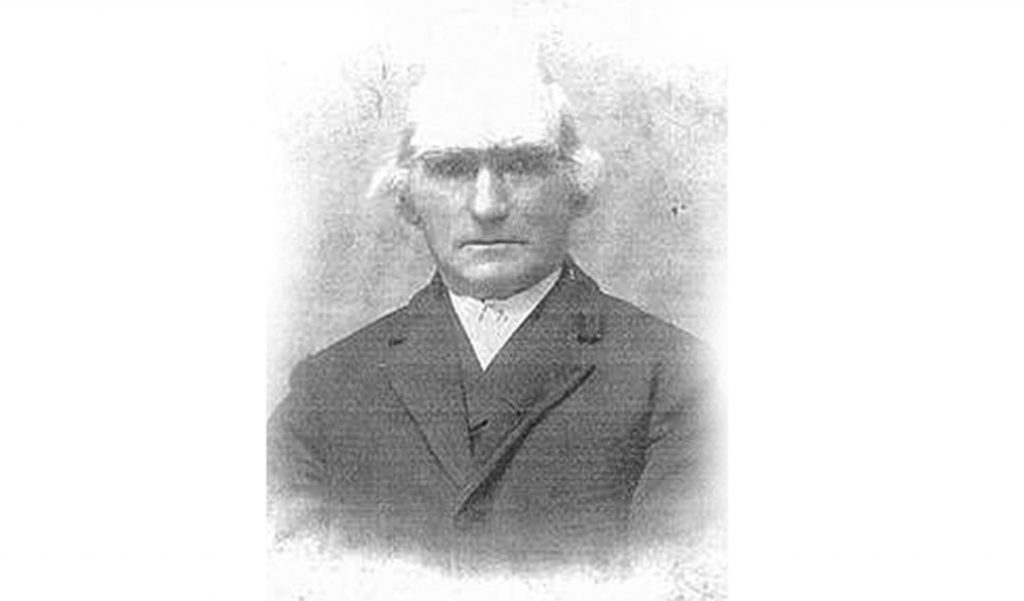
This account, originally printed in Western Work in 1908, comes from Rachel Kellum of Salem, Iowa, when she was 80 years old. She describes how her father helped a slave escaping from Missouri:
Just before dark one evening, a young man lightly tapped on door of the Joel Garretson home four miles east of Salem. The wife cautiously opened it, and by waving her hand showed him the way to the orchard, where he went and found a hiding place underneath a bushy peach tree that had tall grass meeting the limbs.
In a little while, the men were there hunting him, and as they thought went all over that orchard. When they were tired and left, Joel Garretson took him to where Joseph D. Hoag would expect to find any one that needed help (which was a certain thicket), and took him food and returned to the house to see what would come next.
They did not have to wait long until some one came with the wife and babe of the young man, and they were taken to him in the thicket during the night. J. D. Hoag conveyed them to a hiding place near his home, where they remained during the day. At night the conductor on the underground railroad came, riding as though going to a wolf chase, but the returns had to be different.
With the woman for the horse and the two men walking, they proceeded. The moon was shining, and enough of the slaveholders and their men were there so that their patrols passed over the road every thirty minutes. Under these conditions, the trip was made by keeping sufficient distance from the road, only when it must be crossed, and then wait for a cloud in the clear sky to cover the moon. But it came, and while not large, was thick enough to make a deep shadow in which they crossed the road, and thanked God for it and took courage.
When they met the man from Denmark, it was so late at night they had to secrete the slaves in a ravine, three miles this side of Denmark. Then the race for safety and perhaps life began. The distance of seven miles home was covered at a speed that no one timed. The father, who was up watching, took Nathan Kellum’s horse to the back stall, hid the saddle and bridle, gave the horse a few rubs to even up the hair, and fed all the horses in the stable, when approaching footsteps warned him, and he concealed himself while the slave holders examined the horses. They said none of them had been run or they had not been sweating, and were breathing evenly, so they left, not wanting to waste their time.
In another account, Rachel Kellum describes the secret meeting point, the Lone Tree:
Samuel Kellum and family came to Salem in the spring of 1839 from near New Port Indiana, now Fountain City. His wife was a sister of Levi Coffin and was in sympathy with his anti-slavery work.
The work of assisting fleeing slaves began here as soon as any called for it. Remaining near Salem the first summer, they permanently located the following year, twelve miles southeast, near the Lone Tree, one of the marks that travelers were told to look for on the road from Ft. Madison to Salem. The tree was a very large cottonwood, and while it served as guide for so many people, few if any, left the road to go nearer, as a thicket of thorn bushes would prevent their seeking its shade, and the spring of cool water was a quarter of a mile distant on the other side of the road. During all the years of the anti-slavery work, the Lone Tree, with the thorn thicket at its base and prairie grass on the outside of that, made a hiding place for the fugitive slave that was never penetrated by his pursuer. Next in importance was the task of getting him there without arousing the suspicion of neighbors, as well as the stranger that came in pursuit, and offered money to any that would betray their slaves.
Read more fascinating stories about Nathan Kellum’s work at Doug Hamilton’s website.
